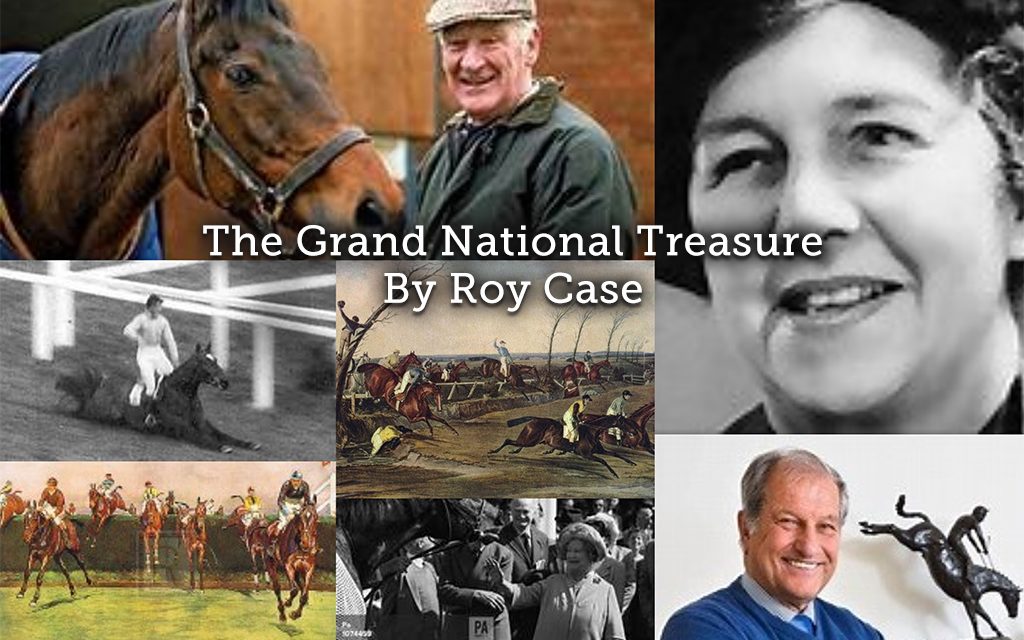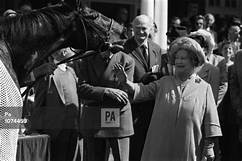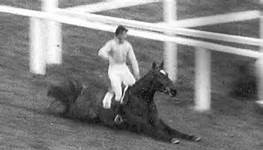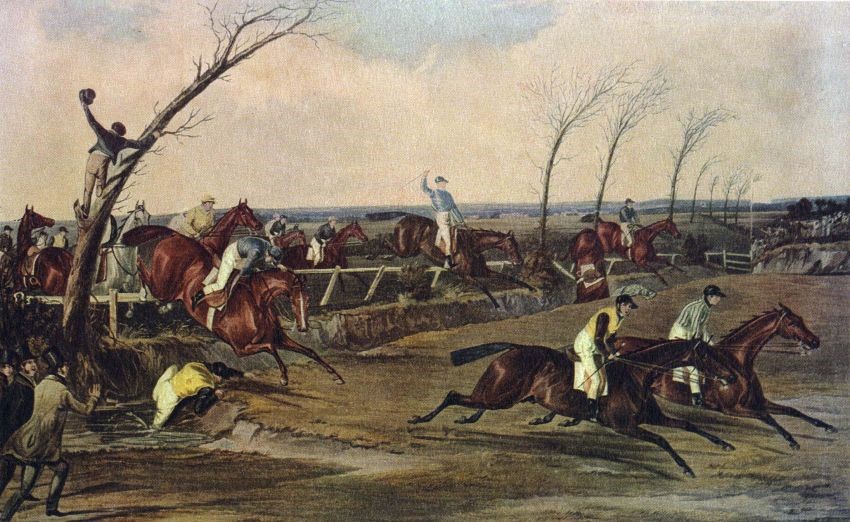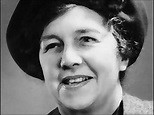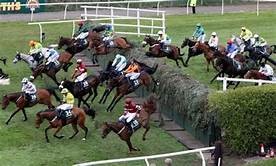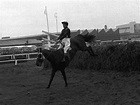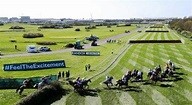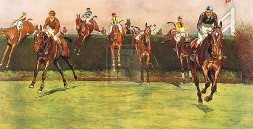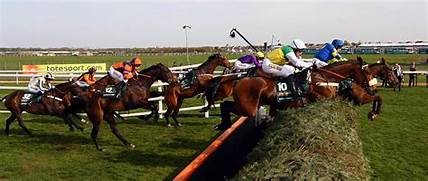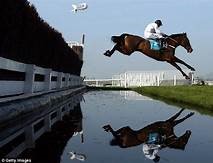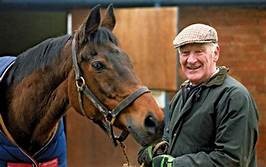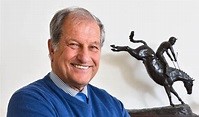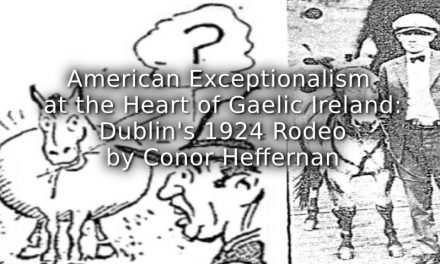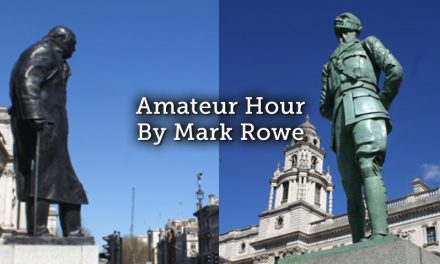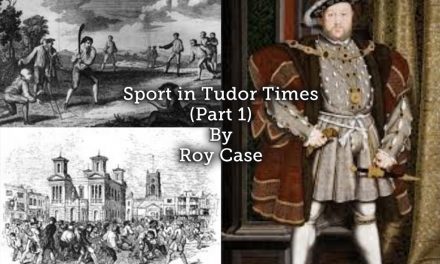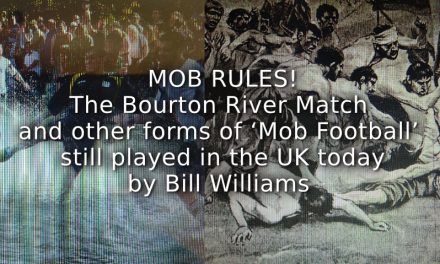Historic accounts suggest it was the Romans who first brought the thrill of horse racing to our shores. Now readily accessible to all sections of society, it is recognised as the second biggest spectator sport and one of Britain’s favourite pastimes,. Royalty has consistently demonstrated its affection for the sport, with race horses frequently being presented to them as gifts. To this day it remains known as the ‘Sport of Kings’.
Britain is home to some of the world’s most important flat and steeplechase race meetings. The Cheltenham Festival is ranked the foremost National Hunt racing festival, hosting events such as the Cheltenham Gold Cup and the Champion Hurdle. However, the most popular and widely known individual race is the Grand National. A National Hunt race held annually, shortly after the Cheltenham Festival, over the famous Aintree Racecourse in Liverpool. But it is more than just another steeplechase, for it has produced some of the sports equine superstars.
First run in 1839, the original concept of the Grand National was a race for gentlemen riders, who were not paid to compete, although many of the riders who weighed in for the earlier races were hired professionals. A handicap steeplechase, run over 4 miles 514 yards [6.907 km], in which the horses jump a total of 30 fences, over two laps of the track. The National boasts one of the longest run-ins of any steeplechase, at 494 yards [452m], during which many potential winners have had victory snatched from them.
One of the most bizarre incidents ever witnessed in the event’s history, occurred in the run-in of the 1956 Grand National, when Devon Loch, owned by Queen Elizabeth, the Queen Mother, having cleared the final fence five lengths ahead of the field, inexplicably half-jumped into the air, and collapsed in a ‘belly-flop’ on the turf, forty yards short of certain victory. Despite the valiant efforts of the jockey Dick Francis, Devon Loch was unable to recover and complete the race, leaving ESB to cross the finishing line in first place.
With a prize fund of over £1 million, it is recognised as the most valuable jump race in Europe, with upwards of 600 million people estimated to tune in to the Grand National each year, many of which normally never watch, or gamble, on horse racing at any other time.
- The Queen Mother at the Grand National
- Devon Loch
In February, 1836 the first of three unofficial selling races known as the Grand Liverpool Steeplechase, was held over the Aintree course. The race was run over a course almost identical to the current Grand National course. The fences were earth banks, no more than 2 feet [0.61 m] high, with a number of gates, hedges and ditches marked with flags along the way, to identify them as obstacles to be jumped, and posts and rails were erected at specific points indicating where the runners were to jump a brook. The inaugural race, the forerunner to what subsequently has become known as the Grand National, attracted a field of just ten runners, and was won by a length, by The Duke, in a time of 20 minutes 10 seconds. Ridden by former soldier Captain Martin Becher [1797-1864], in whose memory the notorious obstacle Becher’s Brook is named.
- Becher’s Brook
The 2/1 favourite Laurie Todd, ridden by Horatio Powell, became the first horse ever to fall in the race, when it fell at a gate which had been nailed shut.
Just four horses lined up for the start of the race the following year, which The Duke won again this time in a time of 14 minutes. And in 1838, only three horses started the race, with The Duke, again ridden by Captain Becher, coming in third, behind the winner Sir William, ridden by Irish jockey, Allen McDonough, who usually wore a black scarf when riding.
There still remains much debate regarding the date of the first official Grand National, since fading memories and the passing of time, resulted in the three earlier races remaining forgotten for over a century. Aintree still regard these races as being unworthy of Grand National status, and continue to recognise them only as unofficial events. However, compelling evidence, unearthed in early newspaper reports, place the races run between 1836-1838 as being held over the course at Aintree, and not at nearby Maghull as was first imagined. Consequently, leading historians now concur the first National was run in 1836.
The race was transformed from a small local occasion to a national affair with the arrival of the railway in Liverpool around 1839, significantly improving transportation to and from the course. Furthermore, the Great St. Albans Chase, which had previously clashed with the Aintree steeplechase, was abandoned, leaving a gap in the racing calendar. These factors, coupled with the formation of an organising committee, led to a more highly publicised race, resulting in a larger field of top quality horses and riders, increasing the number of spectators attending on race day.
The starting line for the first official Grand National was near the Melling Road, and the runners were required to race over partially ploughed fields and jump a number of obstacles which included a series of natural banks, plain fences, a stone wall and two brooks. The race was won by the Cambridgeshire jockey, ‘Jem’ Mason, on the brown bay Lottery, which it was claimed could trot faster than most of his rivals could gallop. Trained by, George Dockeray, who after retiring as a jockey, trained horses from stables in Epsom, Surrey. His training success included the first-ever Grand National winner, and three further National winners Jerry [1840, Gaylad [1842] and Miss Mowbray [1852].
The Aintree course over which the National is now run was founded on land leased from William Molyneux, the 2nd Earl of Sefton, by William Lynn, the proprietor of the Waterloo Hotel. By the 1840s, Lynn’s enthusiasm for Aintree was curtailed through ill-health, and Edward Topham, a prominent member of Lynn’s earlier syndicate, took over the land lease in 1848.
A century later, the Topham family bought the course outright, and Mirabel Topham was appointed to take over its management. Described as ‘the greatest dictator in British racing’, the former Gaiety Girl became one of Aintree’s legendary characters.
- Mirabel Topham
Among the initiatives she introduced was the construction of a motor racing track within the course, which played host to several Grand Prix events. Stirling Moss won his first British Grand Prix at Aintree in 1955, and was again victorious in 1957 and 1959. The last British Grand Prix race held at Aintree was in 1962.
In her later years Mirabel took to running most of her business from her bed,
‘These days I think it’s wise’, she said. ‘I say to the staff, they do the doings, I do the thinking’.
Eventually Mirabel ended the Topham association with the race course, when in 1973 she sold it to property developer Bill Davies, although the family continued to live at their home within the grounds.
Davies tripled admission prices for the 1975 National, resulting in the attendance being the smallest in living memory. Shortly afterwards, the bookmaker Ladbrokes, signed an agreement with Davies which allowed them to take over the management of the National.
From 1984 to 1991 the Canadian distiller, Seagram, sponsored the National, got rid of Davies, and provided a sound foundation for the event’s revival. Coincidentally, the last Seagram-sponsored National was won by a horse named Seagram, prior to the subsidiary company, Martell, taking over the sponsorship in a £4 million deal, which ran for seven years.
In 2005 John Smith’s took over as main sponsors, and the following year launched the John Smith’s People’s Race, which gave members of the public the opportunity to ride in a flat race at Aintree on Grand National day. The event was discontinued in 2010.
In 2013, the alcoholic ginger beer producer Crabbie’s, signed a three-year deal to become the new sponsor of the Grand National, and in the next year the race was run for a record purse of £1 million.
And finally, in 2016, it was announced Randox Health would become the official partners of the Grand National festival, for a period of five years. However, the appointment of Randox Health was seen by many as somewhat controversial, since Aintree’s chairwoman, Rose Paterson, was the wife of Owen Paterson, a Conservative Member of Parliament for North Shropshire, who was reputed as earning a substantial annual consultancy fee working for Randox Health.
For three years during the First World War, Aintree Racecourse was commandeered by the War Office, and alternative races were run over a disused course on land now occupied by Gatwick Airport. The first of these races, held in 1916, was called the Racecourse Association Steeplechase, and the two held in 1917 and 1918, were called the War National Steeplechase. Not always recognised as a Grand National, the results are often omitted from the list of winners.
The 1928 Grand National is also noteworthy, since before the race, a close friend of William Dutton, the rider on Tipperary Tim, is said to have remarked, ‘Billy boy, you’ll only win if all the others fall down !’ A prophesy which turned out to be true. With the riders setting off in misty weather conditions, with the going very heavy, 41 of the 42 starters came to grief and fell during the course of the race. Only two riders completed the course, after Tommy Cullinan, the jockey riding Billy Barton, managed to remount after a fall and complete the race. Tipperary Tim came in first at outside odds of 100/1.
Although the Grand National was run as usual in 1940, the appropriation of the Aintree Racecourse in 1941 for defence use during World War II, meant Grand National events could not be held from 1941-1945.
The course over which the National is now run features much larger fences than those found on other conventional National Hunt tracks. Consequently, the death of horses competing in the Grand National is documented as being higher than the average number of fatalities. Resulting in some animal rights groups campaigning to have the race modified, or even abolished.
There are 16 fences on the National Course, 14 of which are jumped twice, with The Chair and the Water Jump both avoided on the final lap. A number of the fences have become renowned in the world of steeple chasing, which when combined with the overall distance of the event, are said to create
‘the ultimate test of horse and rider’.
Amongst the number are:
-
Bechers Brook – Fence 6 and 22
Height: 5 feet {1.52m}
A popular vantage point for spectators as presents one of the most spectacular displays of jumping. It takes its name from Captain Martin Becher, who fell there in the 1936 National, and took shelter in the small brook running along the landing side of the fence. It is alleged Becher later reflected,
‘Water tastes disgusting without the benefits of whisky’.
- Foinavon – Fence 7 and 23
Height: 4 feet 6 inches {1.37m}
One of the smallest fences on the course, it was named in 1984, after the rank-outsider Foinavon, which had been lagging some 100 yards behind the pack, avoided a pile-up at the fence, and went on to win the 1967 National at odds of 100/1.
-
The Canal Turn – Fence 8 and 24
Height: 5 feet {1.52m}
Noted for the sharp right-angled turn immediately after landing, it was not uncommon in the earlier races, for loose horses to continue straight ahead after the jump and end up in the Leeds and Liverpool canal.
-
Valentine’s – Fence 9 & 25
Height: 5 feet {1.52m}, with a 5 ft 6 in. {1.68m} brook
Originally known as the Second Brook, it was renamed after a horse named Valentine was reputed to have jumped the fence hind legs first in 1840
-
The Chair – Fence 15
Height: 5 feet 2 inches {1.57m}
Originally known as the Monument Jump, this fence claimed the only human life in the National’s history, when in 1862, Joe Wynne, fell and died from his injuries.
-
The Water Jump – Fence 16
Height: 2 feet 6 inches {0.76 m}
Originally a stone wall, the Water Jump is one of the great jumping spectacles and most popular jumps on the course.
During the 1950s the Grand National was dominated by Vincent O’Brien, the Irish race horse trainer from County Cork, who trained different winners of the race for three consecutive years from 1953-1955. Early Mist secured O’Brien’s first victory in 1953, Royal Tan won in 1954, and Quare Times completed the hat-trick in 1955.
In 1975, the introduction of the Sex Discrimination Act made it possible for female jockeys to enter the race. Charlotte Brew holds the distinction of being the first woman to ride in the Grand National in 1977, on the 200/1 outsider Barony Fort, which fell at the fourth-to-last fence. The distinction of being the first woman to complete the race went to Geraldine Rees five years later in 1982. Geraldine was given the opportunity to compete in the National when she was offered the ride on Gordon’s Lad. Unfortunately it went lame just before the race and was withdrawn. Not to be outdone, Geraldine tried to buy an entered horse at auction, but was outbid. And just when she thought all was lost, the new owners, who did not have a jockey booked for the race, decided to invite Geraldine to run in the National riding Cheers. On the big day Cheers cleared the final fence well behind the rest of the field, having used up all his stamina it faltered on the run in and finished in last place.
During this period the legendary Red Rum, the most successful racehorse in Grand National history, was breaking all records. Originally bought as a yearling in 1966 for 400 guineas [£420], Red Rum passed through various training yards before being bought for 6,000 guineas [£6,300] by Ginger McCain on behalf of Noel le Mare. Two days after the purchase, while trotting on Southport beach, McCain noticed Red Rum appeared lame, and was subsequently diagnosed as suffering from an inflammatory bone disorder. McCain had frequently seen lame carthorses being restored to health by galloping in the sea, and successfully used this treatment on his newly acquired racehorse. Red Rum remains the only horse to have won the Grand National three times, in 1973, 1974 and 1977, finishing in second place in the two intervening years of 1975 and 1976.
Ginger McCain returned to the Grand National in 2004, 31 years after Red Rum’s epic first of three wins, when Amberleigh House, ridden by Graham Lee, came home first, and McCain equalled George Dockeray and Fred Rimmel’s record of training four Grand National winners.
- Red Rum with Ginger McCain
In 1979, the jockey Bob Champion had been diagnosed with testicular cancer, and given only months to live. But by 1981 he was passed fit to ride in the Grand National, and saddled up on Aldaniti, a deprived chestnut gelding, which had only recently recovered from chronic leg problems. Despite a poor start, the pair went on to win the race by four-and-a-half lengths, and Champion and Aldaniti were instantly propelled to celebrity status. Within two years, their story had been re-created in the film Champions.
- Bob Champion
The BBC’s leading horse racing commentator, Sir Peter O’Sullevan CBE, who called home the winners of 50 Grand Nationals from 1947, labelled the 1993 National as ‘the greatest disaster in the history of the Grand National’. The result was declared void after a series of incidents, including one jockey managing to get tangled up in the starting tape while under starter’s orders. Following which, due to a misunderstanding between course officials, a false start was declared, with 30 of the 39 riders, failing to realise this, began the race. Course officials tried to halt the runners by waving red flags, but many of the jockeys continued to race, believing the officials were part of a group of protesters which had earlier invaded the course. Seven horses completed the course, the first home being Esha Ness, trained by Jenny Pitman OBE, and ridden by John White. Jenny Pitman became the first woman to train a National winner in 1983 with Corbiere.
Four years later, the 1997 Grand National was postponed for 48 hours after two coded bomb threats were received from the Provisional Irish Republican Army. Now known informally as the Monday National, it was the 150th official anniversary of the event. Jockeys, race personnel, 60,000 spectators, and local residents were evacuated from the course by the police. Leaving around 20,000 spectators unable to access their cars and coaches over the following weekend, which were being held secure inside the course. Local residents came to the rescue and took in stranded punters, as limited hotel accommodation was available in the vicinity. The following day tabloid newspaper headlines parodied one of Sir Winston Churchill’s famous war-time speeches, ‘We’ll fight them on the Becher’s’. When the race was finally run on the following Monday, the organisers provided free admission. In the end the race was won by 25 lengths by Lord Gyllene at odds of 14/1. In the saddle was the Northern Irish jockey, Tony Dobbin, who won over 1,200 races during his career.
Who could possibly have imagined the first National held in 1836, would be destined to become the biggest event in the National Hunt racing calendar. More than three-dozen runners and riders will line up to compete for the £1 million prize. They will be joined by millions of eager enthusiasts of the Grand National, scattered around the entire world. Gripped by the spectacle of the planet’s most iconic horse racing event.
Article © Roy Case

